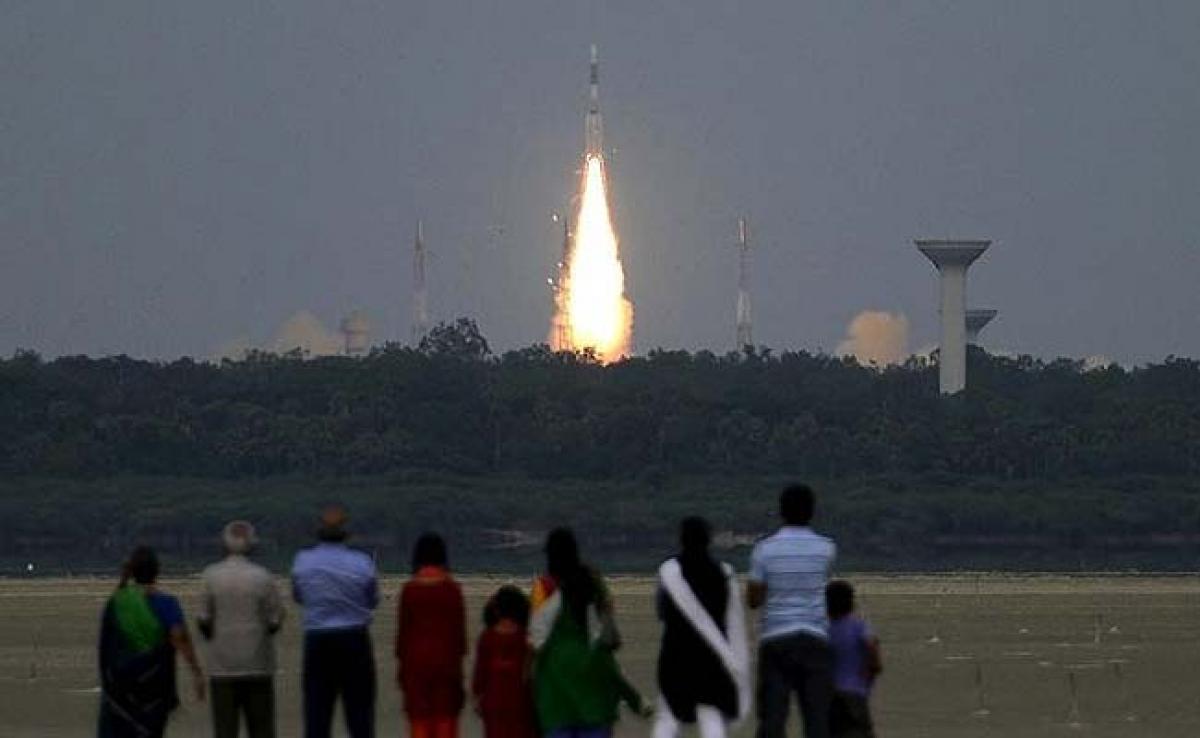Live
- Hyderabad: Jobs top debutant voters’ wish list
- Sajjala denounces Naidu’s ‘heinous politics’
- NDA parties release ‘charge sheet’ against Jagan
- Actor Nikhil Siddharth roots for TDP, takes part in campaign
- Hyderabad: Religious jingoism will not fill empty stomachs says K Chandrashekar Rao
- Hyderabad: BJP does not spare even Gods says Revanth Reddy
- Hyderabad: Will end 4% quota for Muslims in TS says Amit Shah
- Jagan failed to keep poll promises: Sharmila
- Beware of Jagan’s dramas, cautions Naidu
- Hyderabad: Ghose panel to quiz KCR
Just In

India embarks on space diplomacy like never before. For the first time, New Delhi is flexing its prowess of space technology by embarking on an unprecedented and un-chartered \"stratospheric diplomacy\" through a special Rs. 450 crore gift for south Asians.
India embarks on space diplomacy like never before. For the first time, New Delhi is flexing its prowess of space technology by embarking on an unprecedented and un-chartered "stratospheric diplomacy" through a special Rs. 450 crore gift for south Asians.
India is carving a very unique place in the universe, this week New Delhi will 'gift' a heavyweight bird in the sky to its neighbours through the 'South Asia Satellite'.
India is opening its heart out to its neighbours, explains External Affairs Ministry spokesperson Gopal Baglay, adding "neighbourhood first is now being extended beyond the stratosphere".
It seems this 'gift' of a communications satellite for use by neighbours at no cost has no parallels in the space-faring world, all other current regional consortia are commercial for-profit enterprises.
So it seems Prime Minister Narendra Modi is placing the Indian Space Research Organisation (ISRO) in a new orbit by providing this space-based platform that would cost the participating nations almost USD 1,500 million over the 12-year life of the satellite.
Prashant Agarwal, an engineer from IIT-Kanpur and the point-person in the Ministry of External Affairs piloting the project, says, "Prime Minister Modi has actually extended his slogan 'Sab Ka Saath Sab Ka Vikas' to India's neighbourhood essentially to service the needs of the poor in South Asia."
On May 5, the skies above the island of Sriharikota on the coast of the Bay of Bengal will be lit up as the Geo-synchronous Satellite Launch Vehicle (GSLV) also called the 'naughty boy of ISRO' on its 11th mission will carry a message of peace like never before.
The nearly 50-m-tall rocket that weighs about 412 tons will carry what is now dubbed as the 'South Asia Satellite' or what the ISRO still prefers to call GSAT-9.
The 2230-kg satellite has been fabricated in three years and is purely a communications satellite costing Rs. 235 crore. The uniqueness of this satellite is that it will have a footprint that extends all over South Asia and India is gifting this heavenly messenger to its neighbours who according to India's assessment could be helped in better utilising these space based technologies.
The South Asia Satellite has 12 Ku band transponders which India's neighbours can utilise to increase communications. Each country will get access to at least one transponder through which they could beam their own programming and there could be common 'south Asian programing' as well.
Each country has to develop its own ground infrastructure though India is willing to extend assistance and know-how.
While Pakistan has fully opted out, rest of the seven nations that are part of the South Asian Association for Regional Co-operation or SAARC are already on-board with Afghanistan still to ink the deal with some minor technical details still to be fixed in Kabul.
Nepal, Bhutan, Maldives, Bangladesh and Sri Lanka have agreed to be part of this mission, confirms Mr Baglay.

© 2024 Hyderabad Media House Limited/The Hans India. All rights reserved. Powered by hocalwire.com







